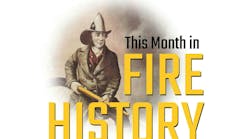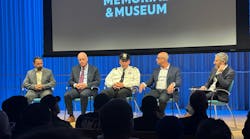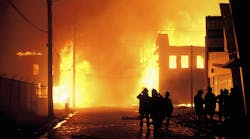That's three times the rate of post-traumatic stress among children from firefighters' families, and nearly double the rate among children of police or civilians
May 22, 2006 -- Children in emergency medical technicians' families were the most shell-shocked following the Sept. 11 attacks, a new study has found. Nearly one in five showed symptoms of post-traumatic stress disorder, according to the study by Columbia University and New York State Psychiatric Institute.
That's three times the rate of post-traumatic stress among children from firefighters' families, and nearly double the rate among children of police or civilians.
The survey found that 18.9 percent of public-school students with EMT parents or relatives had "probable" PTSD six months after 9/11.
By comparison, only 5.6 percent of kids in firefighters' families had symptoms. EMTs and paramedics, like firefighters, work for the FDNY.
And 10.6 percent of students from families that include a police officer showed signs of post-traumatic stress disorder.
Meanwhile, 17 percent of kids with at least two "first responders" in their family had signs of PTSD.
The study, published in the Journal of Traumatic Stress, is believed to be the first to assess mental-health problems of emergency responders' children.
"The study demonstrates that kids may suffer from their parents' exposure," said study co-author Christiane Duarte.
The survey also found that 42 percent of children in EMTs' families had trauma prior to 9/11, compared to 31.2 percent for firefighters' children, 32.6 percent for police officers' kids, and 29.4 percent for children of non-emergency workers.
Duarte said demographic differences could figure in the results.
For example, 62 percent of firefighter kids interviewed were white. But 80 percent of EMT kids were from "disadvantaged" groups or minorities - 40.3 percent black, 39.8 percent Latino.
And 46.6 percent of EMT students were from single-parent homes, more than double the 21.7 percent of kids of firefighter families - an indication they reside in lower-income households.
EMTs also have more young children in public school. About one-third of the fourth- and fifth-graders interviewed for the study were from EMT families, compared to 17 percent from firefighter families.
The students anonymously answered a series of questions such as: "Do you find it harder to keep your mind on things after the WTC event?" and "Have you had a lot of nightmares in the last four months?"
Duarte said the study raises provocative issues. EMTs save lives, but she questioned whether EMTs are as valued by the government or the public as firefighters or cops.
"I don't think so," Duarte said.
The findings did not surprise the union representing EMTs and paramedics.
"You can't just shut things off when you go home," said Pat Bahnken, president of Local 2507. "The cumulative stress of an EMS worker is greater than that of a police officer or firefighter based on volume calls."
And Bahnken said that mental-health strain is worsened by financial struggles, because EMTs are paid less than firefighters and cops, and the job turnover rate is higher.





